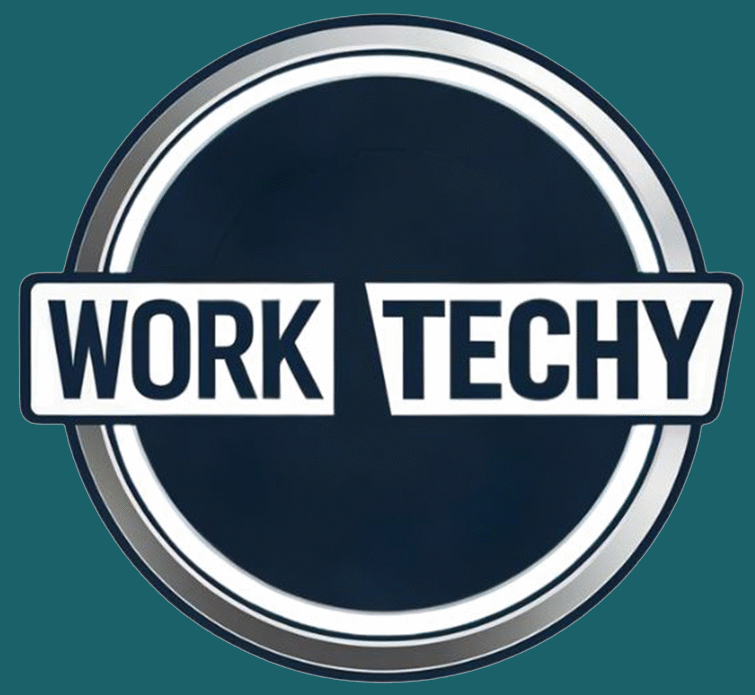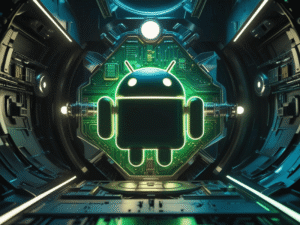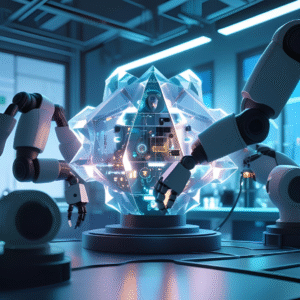Table of Contents
ToggleIntroduction
Computers are one of the most revolutionary inventions in human history. From simple counting devices to powerful machines capable of simulating the human brain, the journey of computers spans centuries of innovation, imagination, and engineering. Today, computers are everywhere—embedded in smartphones, vehicles, medical equipment, industrial machines, and even in everyday household appliances. However, their development was not sudden but a gradual process shaped by human curiosity and the need to solve complex problems efficiently.
This article traces the history and evolution of computers, beginning with ancient counting tools, moving through mechanical calculators, then the birth of electronic computers, and finally to the modern digital age where artificial intelligence and quantum computing define the frontier of technology.
Early Beginnings: Pre-Computer Era
The idea of computation predates modern machines. Humans have always needed tools to calculate, record data, and solve problems.
The Abacus (circa 2500 BCE)
The earliest known computing device was the abacus, invented by the Sumerians and later refined by the Chinese around 500 BCE. The abacus was a wooden frame with rods and beads that allowed merchants and traders to perform arithmetic operations quickly. Though primitive by modern standards, the abacus was a revolutionary step in data processing.
Mechanical Calculators (17th Century)
During the Renaissance, European mathematicians and inventors created mechanical calculators that could perform basic arithmetic.
Wilhelm Schickard (1623) designed one of the earliest calculating clocks.
Blaise Pascal (1642) invented the Pascaline, a machine that could add and subtract using gears and wheels.
Gottfried Wilhelm Leibniz (1673) built the Stepped Reckoner, capable of multiplication and division.
These devices were slow, mechanical, and limited in scope, but they laid the foundation for more advanced computational machines.
The Age of Mechanical Computing (19th Century)
Charles Babbage and the Analytical Engine
The 19th century marked a turning point in computer history with the visionary work of Charles Babbage, often called the “Father of the Computer.”
Difference Engine (1822): Designed to perform polynomial calculations and produce error-free mathematical tables.
Analytical Engine (1837): A more advanced machine with features resembling modern computers. It had a mill (like a CPU), a store (memory), punched cards for input, and an output printer.
Although never completed due to technological limitations of his time, Babbage’s design introduced the concepts of memory, processing, and input/output that are still used in computers today.
Ada Lovelace – The First Programmer
Ada Lovelace, a mathematician, worked with Babbage and is regarded as the first computer programmer. She wrote algorithms for the Analytical Engine to compute Bernoulli numbers, foreseeing that computers could go beyond arithmetic to handle music, graphics, and symbols.
Punched Cards and Data Processing
In 1890, Herman Hollerith developed a punched-card system for the U.S. Census Bureau. His invention reduced data processing time from eight years to just one year. Hollerith later founded the Tabulating Machine Company, which eventually became IBM (International Business Machines).
The Birth of Electronic Computers (20th Century)
The 20th century saw the transition from mechanical to electronic computers, driven by advancements in electricity, electronics, and logic.
First Generation (1940s–1950s) – Vacuum Tubes
The first true computers emerged during and after World War II.
Colossus (1943): Built in Britain to crack Nazi codes. It was the world’s first programmable digital electronic computer.
ENIAC (1946): Developed in the United States by John Presper Eckert and John Mauchly, ENIAC (Electronic Numerical Integrator and Computer) was massive, containing 18,000 vacuum tubes. It could perform thousands of calculations per second.
EDVAC and Stored-Program Concept: Proposed by John von Neumann, this architecture introduced the idea of storing programs and data in the same memory. This von Neumann architecture still underpins modern computers.
Characteristics of first-generation computers:
Used vacuum tubes for circuitry.
Extremely large (room-sized).
Consumed huge amounts of electricity.
Limited reliability due to overheating.
Second Generation (1950s–1960s) – Transistors
The invention of the transistor in 1947 at Bell Labs revolutionized computing. Transistors replaced bulky vacuum tubes, making computers smaller, faster, cheaper, and more reliable.
Examples: IBM 1401, IBM 7090.
Used in business, government, and scientific research.
Introduction of high-level programming languages such as COBOL and FORTRAN.
Third Generation (1960s–1970s) – Integrated Circuits
The development of the integrated circuit (IC) in the late 1950s allowed thousands of transistors to be placed on a single chip.
Computers became even smaller, more efficient, and more affordable.
Operating systems were introduced, enabling multitasking.
Example systems: IBM System/360, DEC PDP-8.
Fourth Generation (1970s–1990s) – Microprocessors
The invention of the microprocessor in 1971 by Intel (Intel 4004) transformed computing. A microprocessor placed the CPU on a single chip.
Personal computers (PCs) became possible.
Examples: Apple II (1977), IBM PC (1981).
Development of graphical user interfaces (GUIs) in systems like Apple Macintosh (1984) and Microsoft Windows (1985).
This era marked the beginning of computers entering homes and small businesses.
Fifth Generation (1990s–Present) – AI and Beyond
The current generation of computers emphasizes speed, connectivity, portability, and intelligence.
Use of microprocessors with millions (and now billions) of transistors.
Growth of the Internet revolutionized global communication and commerce.
Introduction of laptops, smartphones, tablets, and cloud computing.
Artificial intelligence (AI), machine learning, and robotics became key focus areas.
Quantum computing and neuromorphic chips are now being researched as the future of computing.
The Evolution of Software
While hardware advanced rapidly, software development was equally critical.
Assembly Language (1940s–50s): Early low-level programming.
High-Level Languages (1950s–70s): FORTRAN, COBOL, BASIC, and C made programming accessible.
Operating Systems (1960s–80s): UNIX, MS-DOS, Windows, and macOS provided user-friendly environments.
Internet and Open Source (1990s): Linux, web browsers, and online services expanded possibilities.
Modern Software (2000s–Present): Cloud applications, mobile apps, AI-driven software, and virtual/augmented reality experiences dominate computing today.
Key Milestones in Computer History
Abacus (2500 BCE): First known calculating tool.
Pascaline (1642): Mechanical calculator.
Analytical Engine (1837): Concept of a programmable machine.
Hollerith’s Punched Cards (1890): Data processing innovation.
ENIAC (1946): First general-purpose electronic computer.
Transistor (1947): Miniaturization and reliability.
Integrated Circuit (1958): Foundation of modern electronics.
Microprocessor (1971): Enabled personal computers.
Internet (1990s): Global communication revolution.
AI & Quantum Computing (21st Century): The future frontier.
Impact of Computers on Society
The evolution of computers has transformed every aspect of human life:
Education: Online learning, virtual classrooms, digital libraries.
Business: E-commerce, automation, global connectivity.
Entertainment: Video games, streaming platforms, virtual reality.
Science & Engineering: Space exploration, climate modeling, genetic research.
Computers have shifted societies into the Information Age, where data is a powerful resource.
The Future of Computers
The next phase in computer evolution promises breakthroughs in areas such as:
Quantum Computing: Harnessing quantum mechanics for unimaginable speed.
Artificial Intelligence: Smarter, adaptive, and autonomous systems.
Neuromorphic Computing: Mimicking the human brain for advanced problem-solving.
Ubiquitous Computing: Seamless integration of computers into everyday life.
Green Computing: Energy-efficient systems for sustainable development.
Conclusion
The history and evolution of computers is a story of human ingenuity. From the abacus to AI-driven quantum systems, computers have evolved through centuries of innovation, transforming how we live, work, and think. Each generation of computing technology has brought us closer to faster, smarter, and more efficient machines.
Looking ahead, computers will continue to shape the future—driving progress in science, medicine, communication, and even our understanding of intelligence itself. What started as simple counting tools has grown into machines capable of solving the most complex problems in the universe. The journey is far from over, and the future promises even more exciting possibilities.



